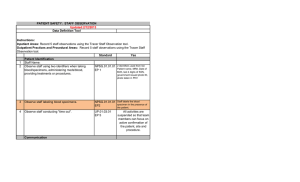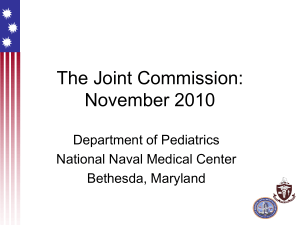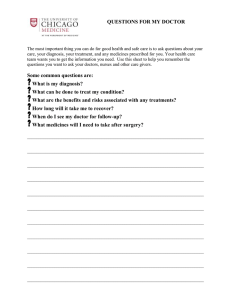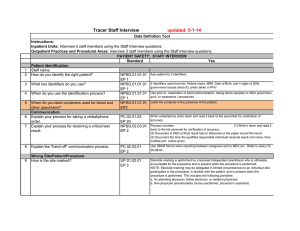2015 Hospital National Patient Safety Goals
advertisement
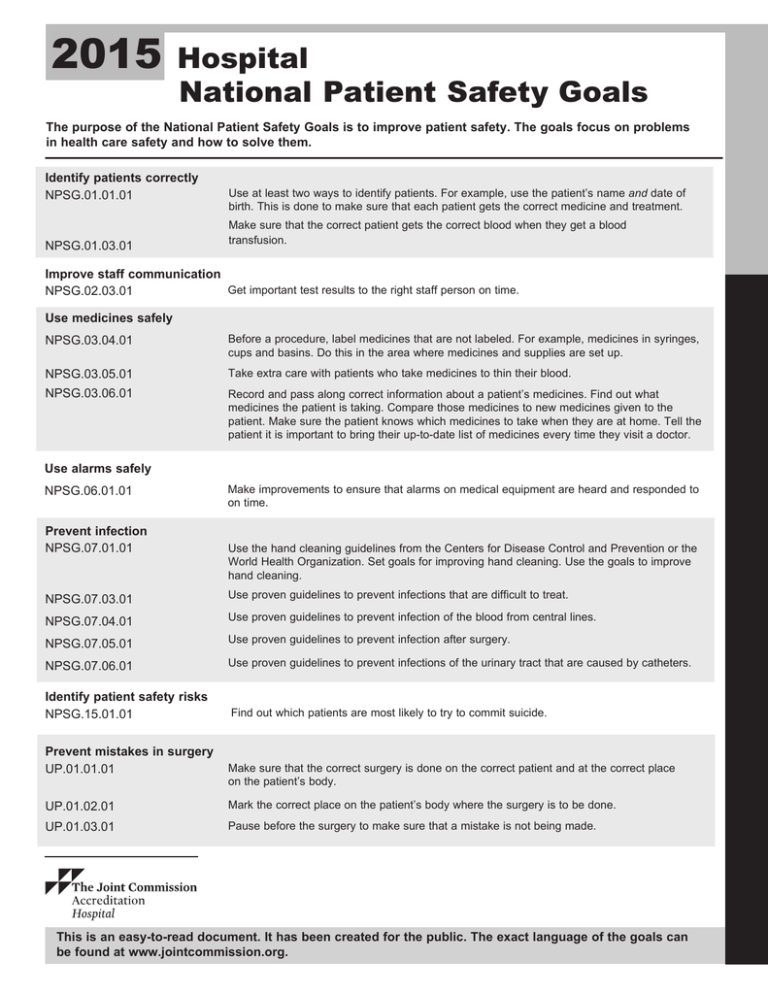
2015 Hospital National Patient Safety Goals The purpose of the National Patient Safety Goals is to improve patient safety. The goals focus on problems in health care safety and how to solve them. Identify patients correctly NPSG.01.01.01 NPSG.01.03.01 Use at least two ways to identify patients. For example, use the patient’s name and date of birth. This is done to make sure that each patient gets the correct medicine and treatment. Make sure that the correct patient gets the correct blood when they get a blood transfusion. Improve staff communication Get important test results to the right staff person on time. NPSG.02.03.01 Use medicines safely NPSG.03.04.01 Before a procedure, label medicines that are not labeled. For example, medicines in syringes, cups and basins. Do this in the area where medicines and supplies are set up. NPSG.03.05.01 Take extra care with patients who take medicines to thin their blood. NPSG.03.06.01 Record and pass along correct information about a patient’s medicines. Find out what medicines the patient is taking. Compare those medicines to new medicines given to the patient. Make sure the patient knows which medicines to take when they are at home. Tell the patient it is important to bring their up-to-date list of medicines every time they visit a doctor. Use alarms safely NPSG.06.01.01 Prevent infection NPSG.07.01.01 Make improvements to ensure that alarms on medical equipment are heard and responded to on time. Use the hand cleaning guidelines from the Centers for Disease Control and Prevention or the World Health Organization. Set goals for improving hand cleaning. Use the goals to improve hand cleaning. NPSG.07.03.01 Use proven guidelines to prevent infections that are difficult to treat. NPSG.07.04.01 Use proven guidelines to prevent infection of the blood from central lines. NPSG.07.05.01 Use proven guidelines to prevent infection after surgery. NPSG.07.06.01 Use proven guidelines to prevent infections of the urinary tract that are caused by catheters. Identify patient safety risks NPSG.15.01.01 Find out which patients are most likely to try to commit suicide. Prevent mistakes in surgery UP.01.01.01 Make sure that the correct surgery is done on the correct patient and at the correct place on the patient’s body. UP.01.02.01 Mark the correct place on the patient’s body where the surgery is to be done. UP.01.03.01 Pause before the surgery to make sure that a mistake is not being made. This is an easy-to-read document. It has been created for the public. The exact language of the goals can be found at www.jointcommission.org.
